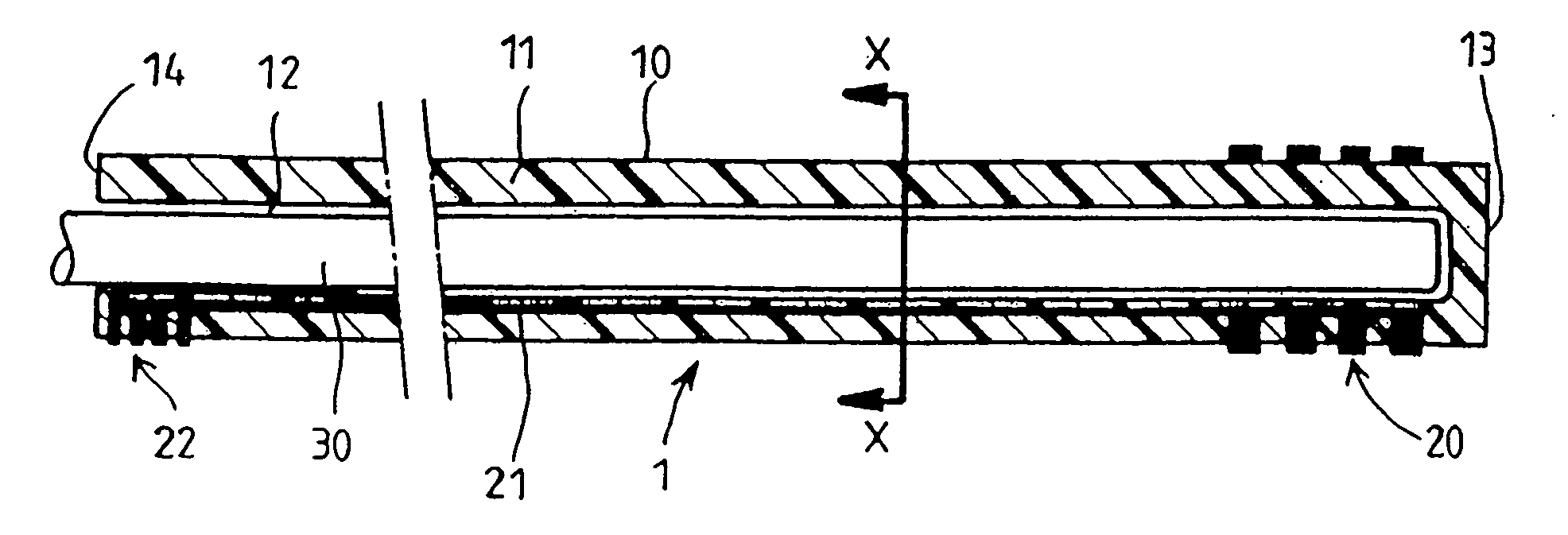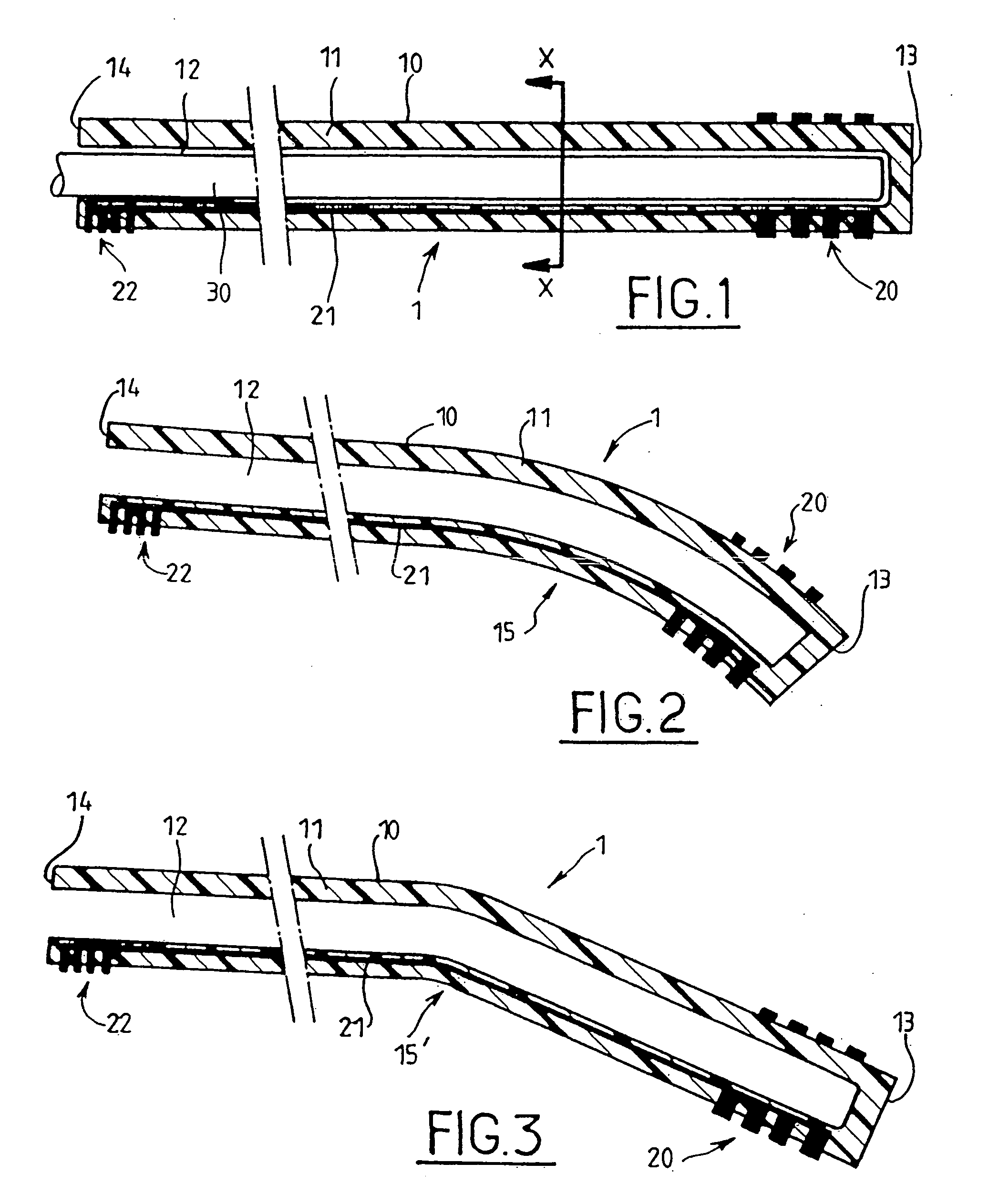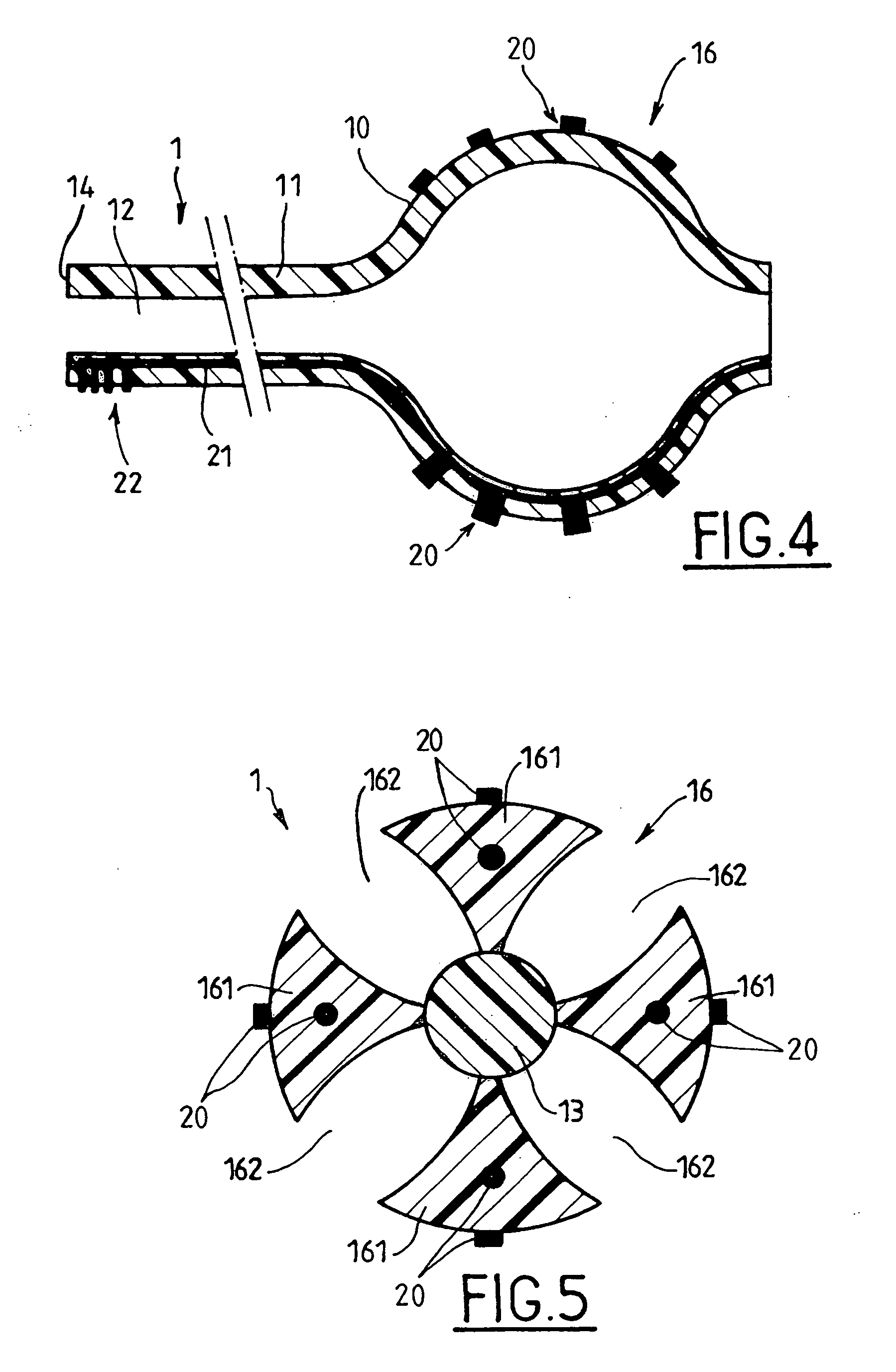Non-rectilinear lead and a system for deep electrical neurostimulation including such a lead
a non-rectilinear lead and deep electrical neurostimulation technology, applied in the field of brain electrical stimulation, can solve the problems of compromising the therapeutic effect, the tip becoming slightly displaced, and not always making it easy to access the region of therapeutic interest, so as to achieve the effect of not injuring tissue structures
- Summary
- Abstract
- Description
- Claims
- Application Information
AI Technical Summary
Benefits of technology
Problems solved by technology
Method used
Image
Examples
fourth embodiment
[0045]Whatever the embodiment under consideration, the material from which the tubular body 10 of the lead 1 is made needs to be sufficiently flexible and elastic to be able to follow the shape of the stylet 30 by deforming reversibly when the stylet is inserted into the lumen 12. Thus, inserting the stylet 30 causes the lead to straighten out. In the third or the fourth embodiment, the tip of the stylet 30 also comes to bear against the closed distal end 13 of the tubular body 10, thereby causing it to be lengthened; the lengthening preferably occurs in the balloon-shaped region 16 and in such a manner that the lead takes on a configuration that is substantially linear.
[0046]In the third embodiment (FIG. 4), the side wall 11 can be of reduced thickness in its balloon-shaped region 16, so as to ensure that the above-mentioned preferred lengthening occurs when the stylet 30 is inserted.
[0047]The fourth embodiment of the invention (FIG. 5) being wherein, in its balloon-shaped region 1...
second embodiment
[0048]The balloon 16 performs three functions. Firstly, it enables the lead to be blocked inside a ventricle of the brain. Secondly, it prevents the tip of the lead from penetrating into the parenchyma of the patient's brain and injuring it, as a result of some involuntary movement. Thirdly, electrodes 20 can be disposed on the balloon so as to make it possible to stimulate a region of the brain that is more extensive than when using the first or the second embodiment; in this case, the equilibrium shape of the balloon can be adapted to that of the cavity.
[0049]The use of a balloon of the type shown in FIGS. 4 and 5 can also be advantageous when using a rectilinear lead that does not present a bend.
[0050]Since it is designed to be inserted in the body of a patient, and more particularly in the patient's brain, the tubular body 10 needs to be made entirely, or at least so far as its outer portion is concerned, out of a material that is biocompatible. Biocompatible materials presentin...
PUM
 Login to View More
Login to View More Abstract
Description
Claims
Application Information
 Login to View More
Login to View More - R&D
- Intellectual Property
- Life Sciences
- Materials
- Tech Scout
- Unparalleled Data Quality
- Higher Quality Content
- 60% Fewer Hallucinations
Browse by: Latest US Patents, China's latest patents, Technical Efficacy Thesaurus, Application Domain, Technology Topic, Popular Technical Reports.
© 2025 PatSnap. All rights reserved.Legal|Privacy policy|Modern Slavery Act Transparency Statement|Sitemap|About US| Contact US: help@patsnap.com



